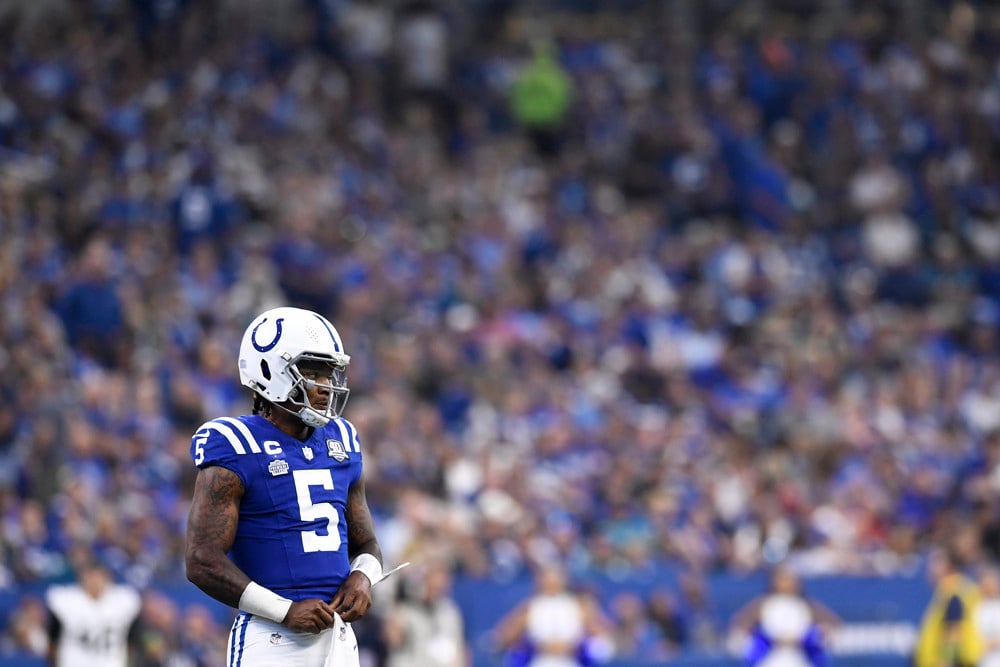In best ball, simply picking the right players is not a realistic strategy. We also need to consider the implications of the no-transaction format.
A big part of that is roster construction. In other words, how many players at each position should we draft? It’s a simple question with a complicated answer for a couple of reasons.
First, our decisions should be dynamic to our positional strength — a function of how we use our early draft capital. If our QB1 is Josh Allen, he’s very likely to be the quarterback who counts in our lineup an overwhelming majority of weeks. In that scenario, selecting just two QBs (with different bye weeks, of course) is correct. But if the first QB we draft is in the Tua Tagovailoa/Kirk Cousins range — players with no rushing juice who are being treated as fringe top-12 options — then taking three makes sense.
Second, we need to account for the quirks in FFPC’s format. Tight ends are emphasized due to TE-premium scoring (1.5 points per reception) and, with FFPC requiring only two WRs to start each week, two FLEX spots that allow us to adapt to the room in drafts. This has historically resulted in more TEs (and slightly fewer wideouts) being the optimal construction.
For our full FFPC rankings specific to the format, click here.
FFPC BEST BALL FORMAT
* 12-team leagues, 20-player rosters
* Full-PPR, 1.5-PPR for TEs, otherwise standard scoring
* Starting lineup: QB, RB, RB, WR, WR, TE, FLEX, FLEX
QUARTERBACKS
Recommendation: Take two if selecting an elite option inside the first seven rounds OR three (including a team’s starter and backup projected for a handful of starts) if waiting.
Analysis: As the quarterback position evolves with more true dual-threats, FFPC win rates have gradually shifted from favoring 3-QB builds in 2019 to 2-QB teams over the last few years. That elite quarterback strategy backfired last year as the top of the hierarchy failed to separate at historically high third-/fourth-round ADPs (more on that here), but taking an upside option with early draft capital (and finishing with only two total QBs) is advised. It’s even viable to bully the room and have our QB position wrapped up with two players by the end of Round 10. If we wait longer than that, however, and/or don’t think our first QB has the upside to compete as a weekly top-five option, then we can take three total players. Taking four QBs remains detrimental and subtracts from the rest of our roster.
When deciding whether to take two or three QBs, keep draft capital and weekly ceiling in mind. If you do invest in a QB in the first five rounds, it’s necessary to pretend as if that player will rival his peers and consistently be usable in 2-QB builds (regardless of whether that outcome is true). A 2-QB roster of Anthony Richardson and Joe Burrow is correct since AR is an early-round QB. But a 2-QB roster of Jared Goff and Justin Herbert makes little sense, as both are late-round QBs with limited to zero rushing upside.
We've launched a new NFL Best Ball product
Best Ball is a draft-only format. No trades, no waivers, and no setting lineups. Our Best Ball team includes a mix of the most successful players and highly-regarded fantasy analysts: Adam Levitan, Justin Herzig, Evan Silva, Mike Leone, and more.
This product is designed to go well beyond our industry-leading rankings, including ADP, Late-Round Targets, Players to Scroll for, Projected Ownership, Market Movement Reports and more.
Click below to learn more about what’s inside our NFL Premium Best Ball subscription.
Best Ball Product Details » Already a subscriber? Log In

